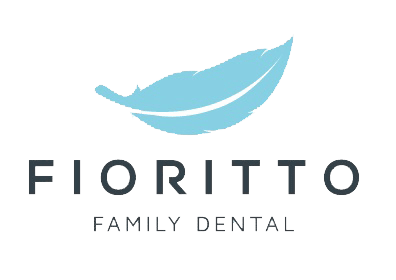Aftercare Instructions Following Tooth Removal – Tooth Extraction Care
Occasionally, a tooth may become so damaged from injury, illness, infection, or decay that it must be extracted. Additionally, adult teeth may be overcrowded and tooth removal is a necessary part of the alignment process. At Fioritto Family Dental, our experienced dentists are qualified to safely pull teeth and deliver the aftercare you need to recover and regain health, function, and a beautiful smile. To avoid complications that could compromise your recovery, it’s important to follow all tooth extraction care instructions.
Extraction
When an adult tooth is extracted, it’s natural for the socket to bleed, even if stitches are in place. Our dental support staff will provide you with gauze pads and instruct you to gently place them onto the socket to absorb the drainage, staunch any bleeding and promote clotting.
Typically, you’ll want to leave gauze in place for 3-4 hours following your tooth extraction, changing it out as necessary. To promote clotting, we recommend patients avoid rinsing, smoking, and drinking through a straw for 24 hours.
Following your extraction, you will be prescribed painkillers to ease any discomfort. Many patients do not require more than acetaminophen, while other patients may require stronger medication. To help with pain and swelling, ice can be applied to the side of your face in ten-minute intervals.
Finally, make sure to get plenty of rest. Plan to rest for at least 24 hours after extraction and take it easy for a couple of days thereafter. Prop your head up on pillows when resting to minimize bleeding.
After the First Day
After the initial 24-hour healing period, you can gradually resume normal activities. You can gently rinse your mouth with a salt water solution (8 oz. warm water, ½ tsp. salt) and brush and floss normally, being careful to avoid the open socket.
You’ll want to stick to soft foods for a few days, such as Jell-O, soup, pudding, yogurt, mashed potatoes, scrambled eggs, and so on. As your socket heals, you can resume a normal diet, but avoid hard foods that might injure your socket and impede healing, at least until you’re fully recovered.
The recovery period is typically just a few days, although it could take up to two weeks to fully heal from extraction. If you have unusual symptoms that could be a sign of infection or something more serious, you should contact our office immediately. Symptoms could include:
- Nausea or vomiting
- Fever and chills
- Redness and swelling
- Excessive discharge
- Cough, trouble breathing, or chest pain
Once you are fully healed, you can discuss tooth replacement options with our dentists to restore your smile and avoid shifting of other teeth. Contact Fioritto Family Dental today at 440-951-5511 or online to schedule your appointment.
Post-Operative Instructions Following An Extraction – Tooth Extraction Care
Rest:
- Rest quietly with your head elevated for the remainder of the day.
- Always get up slowly from a reclined position to prevent dizziness
- Limit physical activity for the first 24 hours and avoid excessive exertion for the first 72 hours.
- Healing will occur much faster with rest!
Swelling and Bruising:
- Some swelling often occurs and this is normal in the healing process.
- However, if swelling seems excessive and is accompanied by fever or severe pain, please call immediately.
- Use an ice pack for the first day following surgery. This will contribute to your comfort and minimize swelling. Place an ice pack on your face over the surgical area; 20 minutes on and 20 minutes off.
- Moist heat may be applied the day following surgery for added comfort.
Medication:
- You should begin taking your pain medication before the numbness wears off
- If an antibiotic was prescribed, take it as directed until it is ALL GONE. It is recommended to take an over-the-counter probiotic when taking antibiotics.
- Some pain medications may cause lightheadedness. Lying down will help this.
- Some medications may cause an upset stomach. Taking these with food will lessen this side effect.
Bleeding:
- Red saliva is expected for the first 24 hours, however extensive bleeding should not occur. If such bleeding should occur, apply firm pressure with a moist gauze or moist teabag to the area for 20 minutes. If the bleeding does not subside, please call.
Mouth Care:
- AVOID RINSING, SPITTING OR SUCKING THROUGH A STRAW for 3 days after surgery. Blood is clotting and this will disturb the healing process.
- You may begin gentle rinsing 3 days after surgery, but do not rinse vigorously for 7 days.
- Do not rinse with an over-the-counter mouthwash for 7 days
- You may begin to brush the NON-SURGICAL areas the day of surgery
Eating:
- Eat softer foods for the first week such as pasta, eggs, fish, yogurt, soup, pudding and soft cooked vegetables.
- For the first few days, avoid extremes: very hot, very cold or acidic/spicy foods.
- Do not eat hard crunchy foods such as popcorn, small seeds (like in strawberries, sesame, and poppy), nuts or chips for the first week after surgery.
- Maintain a balanced diet.
Smoking:
- We strongly advise NOT SMOKING after surgery. Smoking delays the healing, increases discomfort, and may encourage bleeding and infection in the surgical site.
If you have any questions or concerns please call us (440)951-5511.

